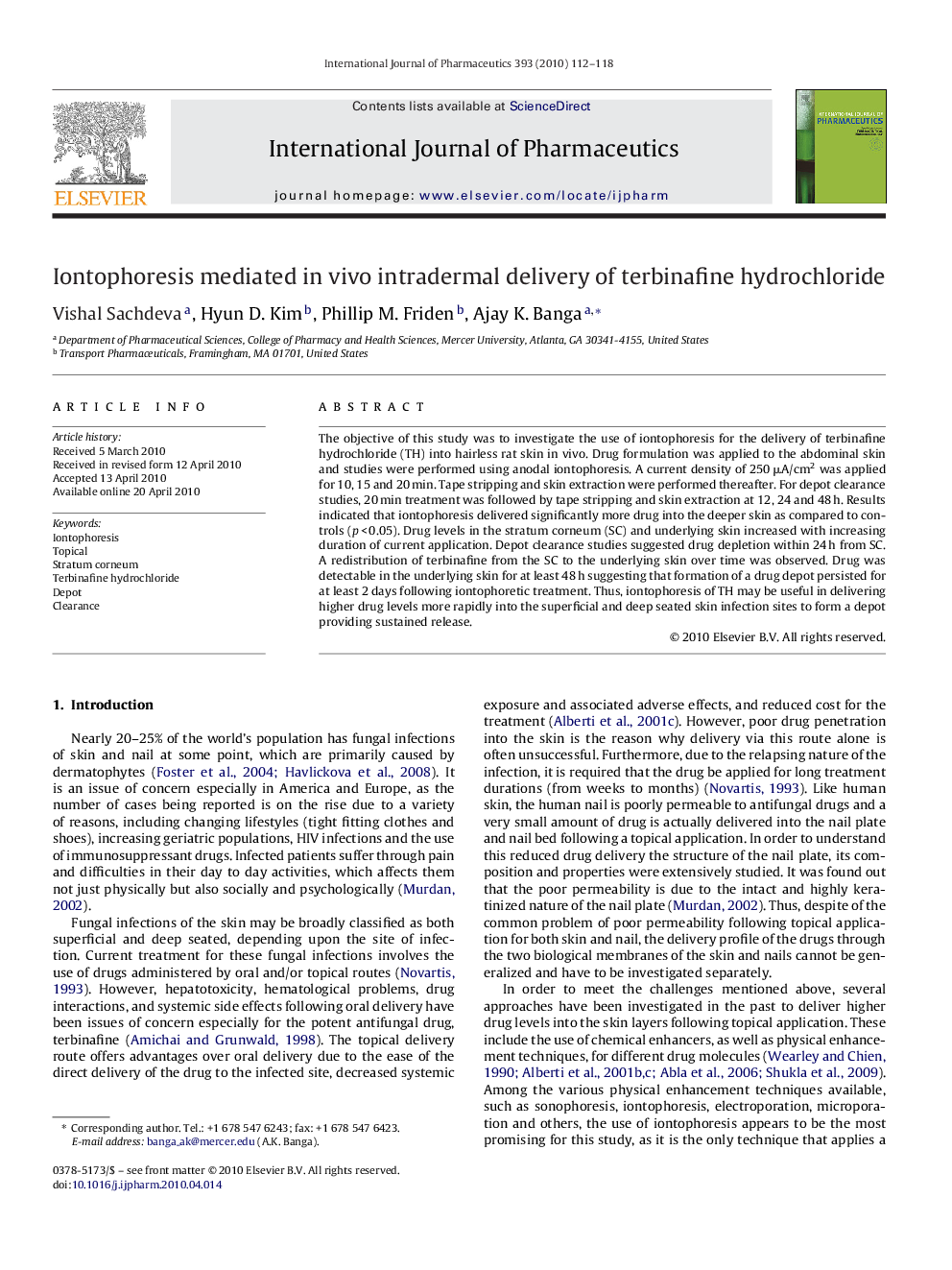| Article ID | Journal | Published Year | Pages | File Type |
|---|---|---|---|---|
| 2503864 | International Journal of Pharmaceutics | 2010 | 7 Pages |
The objective of this study was to investigate the use of iontophoresis for the delivery of terbinafine hydrochloride (TH) into hairless rat skin in vivo. Drug formulation was applied to the abdominal skin and studies were performed using anodal iontophoresis. A current density of 250 μA/cm2 was applied for 10, 15 and 20 min. Tape stripping and skin extraction were performed thereafter. For depot clearance studies, 20 min treatment was followed by tape stripping and skin extraction at 12, 24 and 48 h. Results indicated that iontophoresis delivered significantly more drug into the deeper skin as compared to controls (p < 0.05). Drug levels in the stratum corneum (SC) and underlying skin increased with increasing duration of current application. Depot clearance studies suggested drug depletion within 24 h from SC. A redistribution of terbinafine from the SC to the underlying skin over time was observed. Drug was detectable in the underlying skin for at least 48 h suggesting that formation of a drug depot persisted for at least 2 days following iontophoretic treatment. Thus, iontophoresis of TH may be useful in delivering higher drug levels more rapidly into the superficial and deep seated skin infection sites to form a depot providing sustained release.
